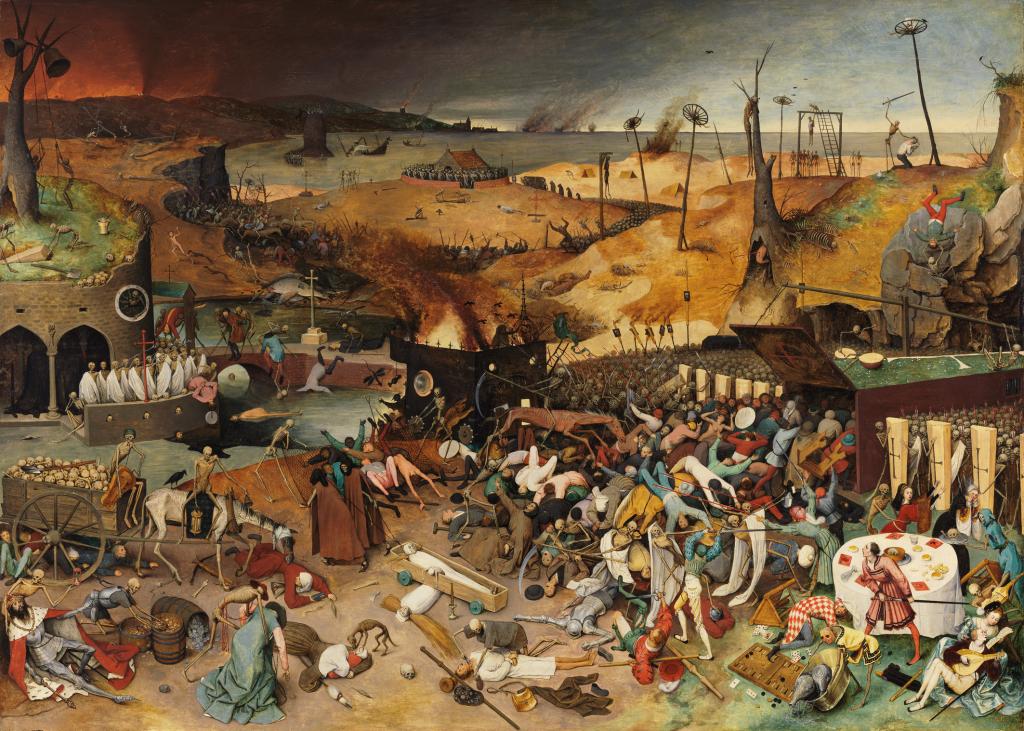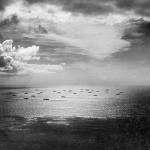I have argued that transformational eras of religious change are often rooted in climate-driven crises, which are manifested in famine, plague, political disasters, and even state failure. I specifically discussed this in the context of the years around 1540, which among other things allowed the establishment and growth of the then-very radical creed of Calvinism. But the later development of that movement owes much – owes everything? – to a later episode of really extreme climate-driven disaster. This post is how we tell the story of religion and religious change, and how we can scarcely do that without taking account of that climate background. (I draw here on my recent book, Climate, Catastrophe, and Faith: How Changes in Climate Drive Religious Upheaval).
In the context of European history, Calvinism matters enormously as a dynamic political and cultural force, which for a century represented the cutting edge of the Protestant movement. Later, the key Calvinist nations or regions – the Netherlands, Scotland, Switzerland, and New England – played a crucial role in the emergence of the Enlightenment. We can debate the exact linkage between the two phases—sixteenth-century Calvinism and the eighteenth century Enlightenment—but the continuities are impressive.
The key moment in that story was the decade after 1562 or so, a time of various civil wars and revolutions, when Calvinism secured its crucial political and cultural bases, most obviously in the Netherlands, but also in Scotland and Hungary. In Scotland, the Calvinist aristocracy secured their hold on the state following a messy domestic crisis in the country’s royal family in 1566–1567. Also in 1567, Hungary’s Calvinists acquired a new organizational sophistication with a famous synod at Debrecen. From 1563, the movement developed a vital new political and cultural center in the German Rhineland state of the Palatinate. From the mid-1560s, England’s Reformed mobilized into what their enemies termed the Puritan movement; the word “Puritan” first appears in 1564 or 1565. From 1570 onward, those Puritans became ever bolder and more inflammatory in their demands and their petitions to a hostile monarch. By the mid-1570s, the Puritans were spawning alternative religious and clerical structures that looked unnervingly like a seditious parallel to the state church.
So how does all this relate to climate?
Yes, there was the long era called the Little Ice Age or LIA, which spanned several centuries, but matters became dreadfully more acute around 1562, which really marked a horrific new era. Scholars talk of a Hyper-LIA, which was driven in part by a series of spectacular volcanic eruptions on the Pacific Rim. From 1562 onward, Europe endured some of the most brutal weather in its recorded history. The winter of 1564–1565 beggared belief. Contemporaries listed the great rivers that were now frozen hard enough to become highways: the Rhône and Seine, Thames and Scheldt. When the ice melted, heavy flooding added to the general misery. The year 1566 brought heavy rain in the spring and a drought in the summer, so famine naturally followed. The year 1569 was viciously cold across Europe, with the lagoon of Venice remaining frozen until March. The winter of 1572–1573 was atrocious. To take one specific country, France suffered extremely hard winters in 1565, 1568, 1570, and 1573. In much of Europe, the cold reduced the growing season for crops by several weeks, with disastrous consequences for food supplies. Different regions suffered rain in quantities that were crushingly large or painfully insufficient.
Famines affected most or all of Europe in 1569–1574. Besides outright famine, we find all the customary indices of despair: surges in economic crime, hunger protests, peaks in judicial executions, and starving peasants flocking to neighboring towns in quest of food after their own crops failed. The numbers of beggars swelled to the point that virtual armies of the underclass wandered from town to town.
And as so often, sudden climate change detonated not just famine, but also plague and pestilence. In England, the plague of 1563-1564 was one of the worst on record.
Starving and terrified people were very open to calls for sedition and rebellion, to overthrow the ungodly regimes that had so incensed heaven, and caused the dreadful plagues and famines. That was especially true in areas divided uneasily between rival religions, such as the Protestant-Catholic divide in France. Those internal tensions became sharply and suddenly more marked, with the outbreak of deadly violence, both local massacres and civil wars. Just to take one example of many, in the spring of 1562, the French city of Toulouse suffered an egregious manifestation of this escalating insanity when several thousand perished in street fighting between Catholics and Protestants. Open warfare between Catholics and Calvinists dragged on through the 1590s, culminating in the notorious massacre of tens of thousands of Protestants on St. Bartholomew’s Day in 1572. Spanning the years 1562-1598, France’s Wars of Religion claimed some two million lives in one of the bloodiest conflicts in European history before the twentieth century.
The chronology of these events should be stressed. Religious tensions across Europe dated back to the beginning of the Reformation in 1517, but the full savagery of generalized European warfare arrived only in the 1560s, with uniquely awful periods in 1562-3, and from 1567 onward. Bear those nightmare dates in mind – 1566, 1569-70, 1572. Just in the years 1568-71, wars, risings, conspiracies, massacres, and revolutions swept over England, Russia, and southern Spain.
Some of the most influential developments occurred in the land we now call the Netherlands, where we can trace an overwhelming relationship between climate-driven disaster and the growth of radical religious movements. In the mid-sixteenth century, the Low Countries were an extraordinarily valuable part of the Habsburg Empire, but they were also the setting for rising tensions. Aristocrats resented imperial taxation, and the growing Protestant minority feared the growing intrusion of militant Catholic authorities, symbolized by the Inquisition. Even so, in no sense was a militant Calvinist party organizing revolution, and many of the key aristocratic leaders were Catholic, or else moderate Protestants. Everything changed with the disastrous winter of 1564–1565, followed by harsh frosts that ruined food production and drove food prices to impossible levels. Food riots followed. Mass popular misery created an audience sympathetic to hearing grievances, and as a government minister wisely warned, “If the people rise up, the religious issue will become involved.”
Open rebellion erupted in the Netherlands in 1566 when Calvinist militants launched comprehensive attacks on churches and their contents in what would be remembered as the Beeldenstorm, the evocatively named Storm of Images. The cities spiraled out of control. Spanish authorities responded ferociously with repression and mass executions, and for some years it seemed that the insurgency was under control. Calvinists occupied an ever-larger role in the continuing resistance, which gained strength in the terrible crisis years of the late 1560s. In 1572, Calvinist revolutionaries seized a port, which served as the nucleus of a steadily expanding core of liberated territory. In 1581, the rebellious regions proclaim their independence as the United Provinces, the nation that would later be known simply as the Netherlands. The resulting war between the new Netherlands and the Spanish Empire persisted, with only short breaks, into the 1640s. That confrontation was central to European politics over what we call the Eighty Years’ War.
The United Provinces increasingly became a solidly Calvinist state, where Reformed clergy occupied an ever more visible role. From the 1580s, the new nation became firmly established as a major military and commercial force, with incalculable consequences for every aspect of and scientific development, its global and imperial role, and the origins of the Enlightenment. The Calvinist republic of the Netherlands has a solid claim to have invented modernity.
At every stage of this story, climate-related factors were critical to the history, and that narrative has been expertly told by historian Dagomar Degroot. His book’s title, The Frigid Golden Age, constantly reminds us of the extremely severe conditions in which the revolt occurred, and the new nation was born. Degroot describes the climate’s impact on multiple incidents in those struggles, but one of his basic points is how the Dutch and Spanish had very different styles of warfare, and the extreme cold benefited the rebels to the cost of the occupiers. (You should read his book in detail). That climate background meant that Dutch survived the unequal struggle and built a nation.
If you tell the story of Calvinism – or indeed, of the Reformation as such – without taking account of climate and environment, you are missing a very large and critical part of the story.














